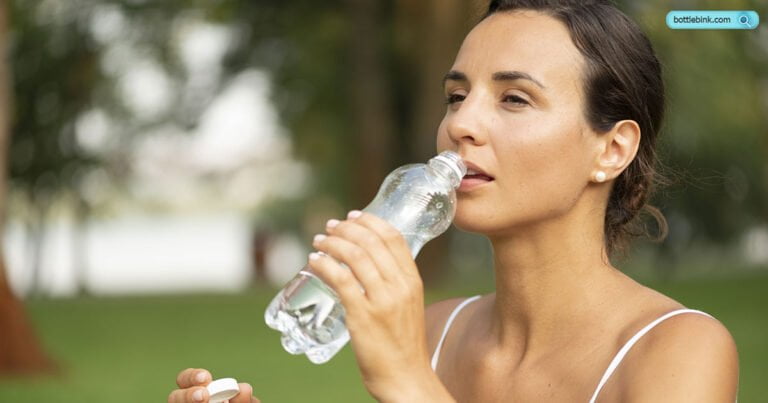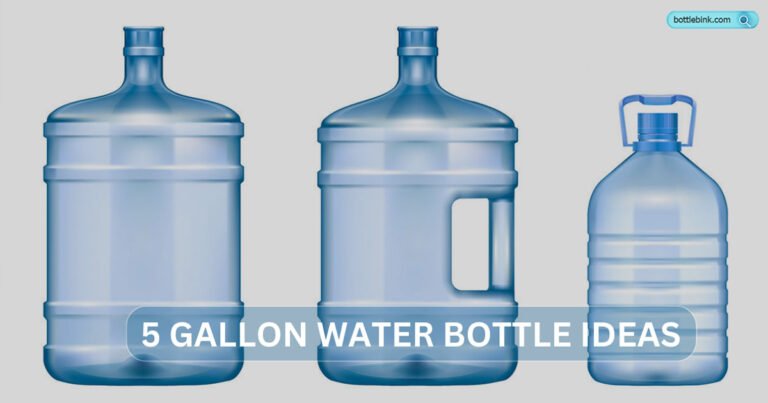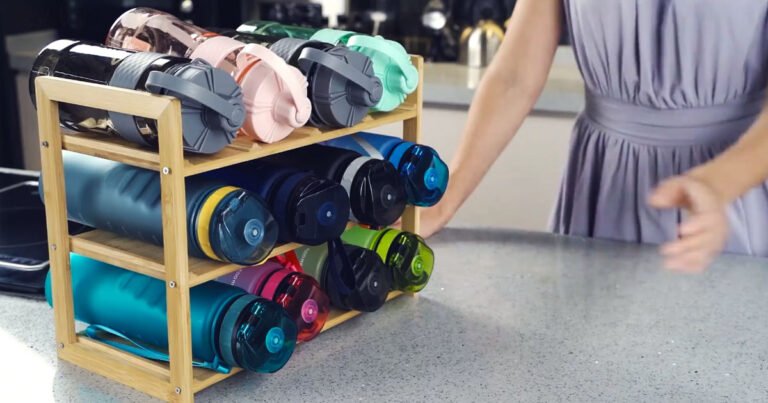How to Store Water Bottles: Genius Storage Hacks!
To store water bottles, thoroughly wash them with warm, soapy water and fill directly from the faucet. Store in sealed containers in a dark, dry, and cool place to maintain freshness and safety.
Proper storage of water bottles is essential to ensure their longevity and safety for consumption. Whether you are stockpiling water for emergencies or simply need to organize them in your kitchen, there are various techniques and storage solutions available. Some options include using stackable racks, over-the-door organizers, storage baskets, wire stands, drawer dividers, and door shoe organizers.
Properly storing water bottles not only keeps them accessible but also helps in saving space and maintaining the quality of the water for an extended period. Whether in a small kitchen or a larger storage area, there are solutions to suit various needs and preferences.
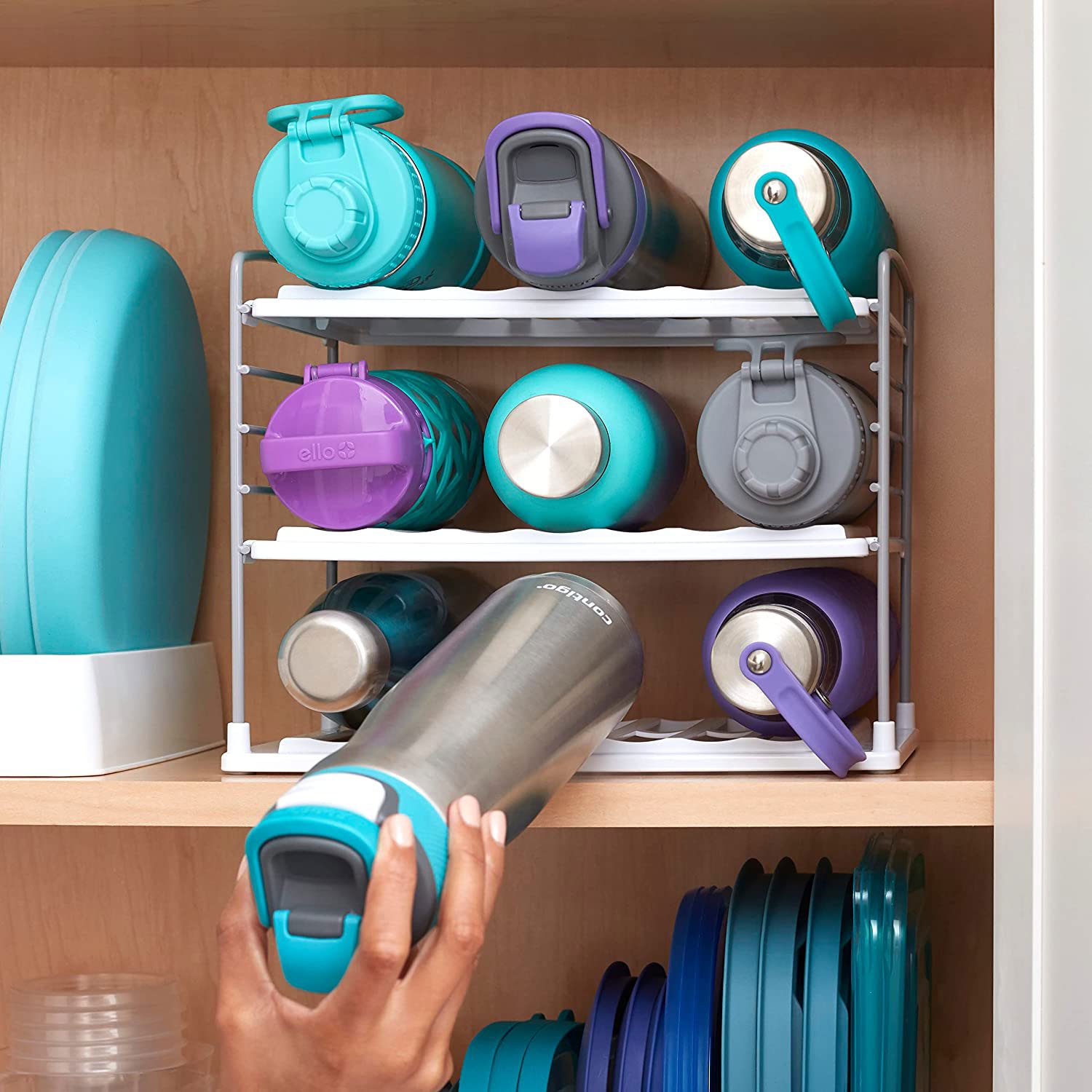
Credit: www.tasteofhome.com
Choosing The Right Storage Location
Discover the best techniques for storing water bottles in a suitable location. Learn how to properly clean and fill bottles, and find the perfect spot for storing them to ensure freshness and safety.
Consider Temperature And Sunlight
Store bottled water in a cool, dark place away from direct sunlight to prevent the growth of algae.
Extreme temperatures can degrade plastic bottles, affecting the water quality.
Avoid Areas With Chemical Exposure
Avoid storing water bottles near chemicals like gasoline, paint thinners, or cleaners to prevent contamination.
Chemical exposure can leach toxic substances into the water, compromising safety.
Optimal Storage Containers
When it comes to ensuring the safety and quality of your drinking water, optimal storage containers play a crucial role. Properly storing your water bottles in suitable containers not only maintains the purity of the water but also prevents any contamination. Selecting the right storage containers is essential for keeping your water bottles safe and potable for an extended period of time. Let’s explore the ideal options for storing water bottles to ensure it remains fresh and safe for consumption.
Select Bpa-free Containers
It’s crucial to prioritize the use of BPA-free containers for storing your water bottles. Bisphenol A (BPA) is a chemical found in many plastic materials which can leach into the water, especially when exposed to heat. To avoid potential health risks associated with BPA, opt for containers that are specifically labeled as BPA-free. These containers provide a safe and secure environment for storing water bottles, ensuring the water quality remains uncompromised.
Use Food-grade Stainless Steel Or Glass Bottles
Food-grade stainless steel or glass bottles are excellent choices for storing water due to their non-reactive and non-toxic nature. Stainless steel containers are durable, resistant to corrosion, and do not impart any unwanted flavors to the water. Meanwhile, glass bottles are inert and do not leach harmful chemicals into the water. This makes them ideal for long-term storage of water, preserving its freshness and purity. By utilizing these materials for storage, you can ensure that your drinking water remains safe and free from contaminants.
Maintaining Hygiene And Cleanliness
Ensuring the cleanliness and hygiene of water bottles is crucial for maintaining safe and healthy drinking water. Proper storage methods play a significant role in preserving the purity of the water and preventing the growth of harmful microorganisms. Here are essential tips to help you maintain the hygiene and cleanliness of your stored water bottles:
Regularly Wash And Dry The Bottles
It’s essential to regularly wash and dry water bottles to prevent the build-up of bacteria and mold. Use mild dishwashing soap and hot water to thoroughly clean the bottles inside and out. Make sure to scrub the interior and rinse them carefully to remove any soap residue. After washing, allow the bottles to air dry completely before storing them.
Avoid Storing In Humid Or Mold-prone Areas
Storing water bottles in humid or mold-prone areas can lead to contamination and affect the cleanliness of the bottles. Keep the storage area well-ventilated and away from damp environments to prevent mold growth. Additionally, avoid storing bottles in direct sunlight, as exposure to UV rays can degrade the plastic and compromise the water quality.

Long-term Storage Considerations
For long-term storage considerations of water bottles, clean and fill containers from the faucet. Store sealed bottles in a cool, dark place away from direct sunlight to maintain freshness. Organize with stackable racks or over-the-door organizers to maximize space in a small kitchen.
Rotate Water Supply Regularly
Regularly rotating your water supply helps ensure freshness and quality.
Check For Leaks And Damages
Inspect water bottles for leaks and damages to prevent contamination.
Emergency Preparedness And Accessibility
To ensure emergency preparedness and accessibility, storing water bottles properly is crucial. Thoroughly wash plastic bottles with warm, soapy water, fill them from the faucet, and store in a dark, dry, and cool place. Consider utilizing storage racks, baskets, or over-the-door organizers to save space in small kitchens.
Ensure Easy Access In Emergency Situations
In times of emergencies, it is crucial to have easy access to stored water bottles. Here are some practical tips to ensure accessibility:
- Store water bottles in a designated area that is easily accessible for everyone in your household.
- Consider using transparent containers or bins to store water bottles, making it easy to identify and grab them quickly during emergencies.
- Place water bottles in a location that is unlikely to be affected by potential hazards, such as floods or fires.
- Keep the storage area well-organized so that water bottles are visible and easily reachable.
- Regularly check and rotate your water supply to ensure that the bottles are not expired and are in good condition.
Have A Backup Supply Plan
It is essential to have a backup supply of water bottles to ensure you are prepared for any situation. Here are some tips for creating a backup supply plan:
- Calculate the amount of water your household needs for a specific period, such as 3 days or a week, and store accordingly.
- Consider the number of people in your household and their individual water consumption needs when estimating the backup supply.
- Label and date your water bottles, ensuring that the oldest bottles are used first to maintain freshness.
- Regularly review and update your backup water supply to account for changes in your household, such as the addition of new members.
- Explore alternative storage options, such as water pouches or collapsible containers, for situations where space is limited.
Remember, emergency preparedness and accessibility are crucial when it comes to storing water bottles. By following these tips, you can ensure easy access to water in times of need and have a backup supply plan in place, providing peace of mind for yourself and your loved ones.
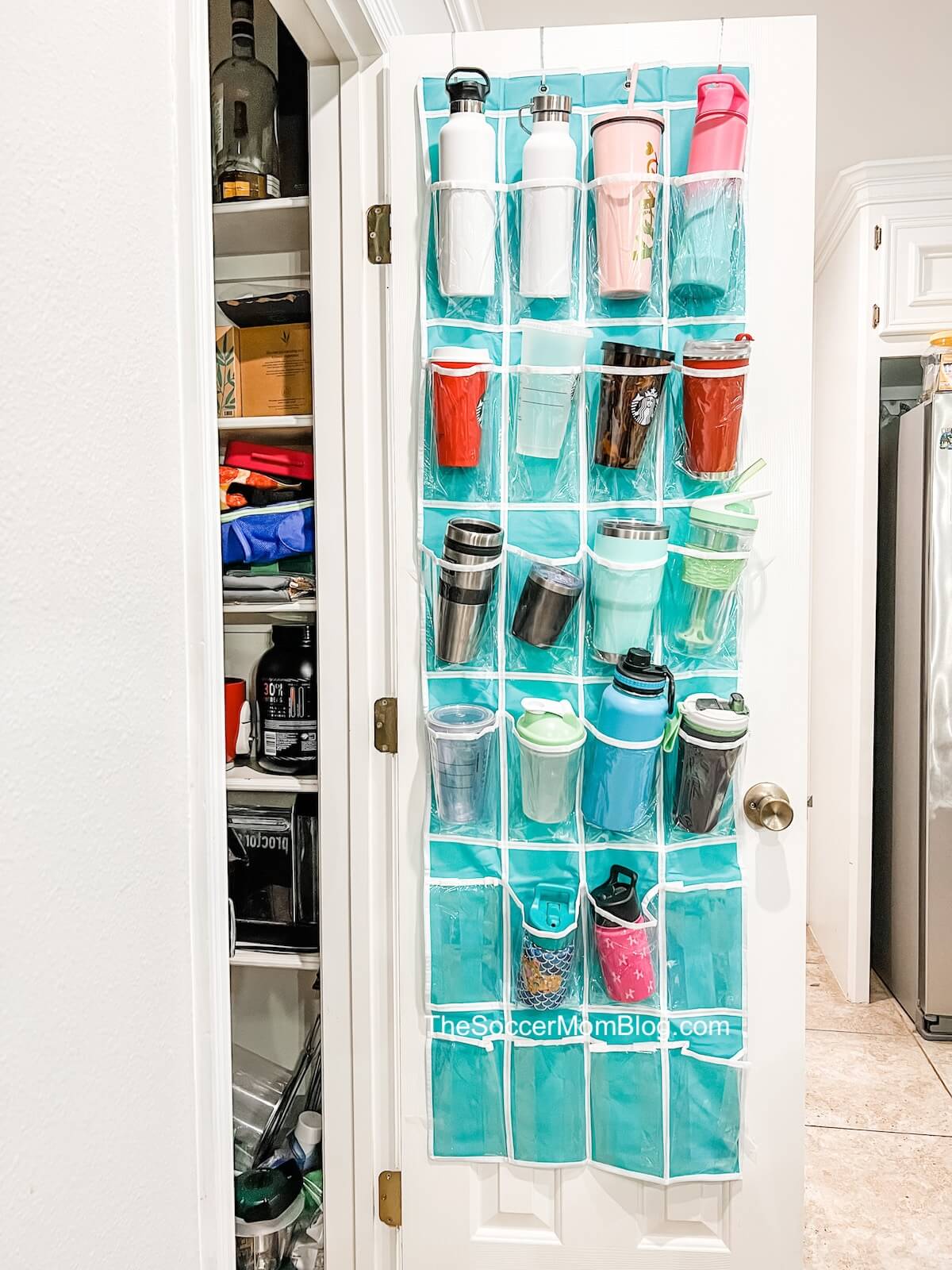
Credit: www.tasteofhome.com
FAQs For How To Store Water Bottles
How Do You Store Water Bottles When Not In Use?
Store water bottles in a dark, cool place after washing and sealing them. Use a stacking rack or narrow bins for organized storage.
What Is The Best Way To Store Bottled Water?
Store bottled water in a cool, dark place at room temperature. Ensure containers are sealed and away from direct sunlight and chemicals.
How Do You Store 16 Oz Water Bottles?
To store 16 oz water bottles, follow these tips: 1. Clean the bottles thoroughly with warm, soapy water. 2. Fill them directly from the faucet. 3. Store sealed containers in a dark, dry, and cool place. 4. Avoid direct sunlight and keep them away from solvents and chemicals.
5. Use a water bottle rack or stack them in a stable and secure manner.
How Do You Store Water Bottles In A Small Kitchen?
To store water bottles in a small kitchen, you can stack them on top of each other or use a vertical rack. Both methods save space and keep the bottles organized. Sort the bottles into narrow bins with handles for easy identification.
Conclusion
Organize your water bottles efficiently with these creative storage solutions. From stacking racks to over-door organizers, find the perfect method for your space. Keep bottles clean, cool, and away from direct sunlight for optimal freshness. Explore these practical tips for storing water bottles effectively in your home.

